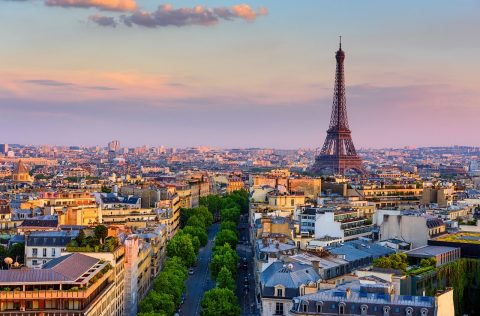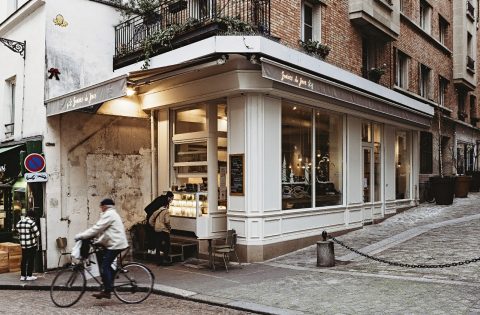The Best Under-the-radar Restaurants in Paris
The multicultural dining scene in Paris is booming, with chefs from all over the world heading up the city’s hottest restaurants. Here are the best places to dine in the City of Lights right now.
Steamed buns at Bao Family
1/5It used to be that authentic Chinese food was almost exclusively found in one of Paris' three Chinatowns: a tangle of streets close to the Marais, the Belleville neighbourhood and an area in 13th district. In recent years, entrepreneurs like Céline Chung, co-founder of Bao Family, a group of new-generation steam bun restaurants in the French capital and Marseille, are disrupting the traditional image of their familial cuisine. “I grew up between two cultures: Chinese at home and French outside,” says Chung, for whom expressing this duality is vital. "We want to pay homage to our heritage but also infuse it with our own more modern taste.” At Petit Bao, her first restaurant, old-school hip-hop provides the backdrop as diners settle at tables or the bar, looking on while chefs fold spicy pork with ginger and chives into the xiaolongbao that are steamed in bamboo baskets. As well as several types of the soft white buns, each Bao Family outpost serves other regional specialties, including melt-in-the-mouth Hong Shao eggplant and sweet and tart sour chicken.
Image credit: Virginie Garnier
Senegalese fusion at MoSuke
2/5Chef Mory Sacko needs no introduction in Paris. Just months after opening his fine diner MoSuke in Pernety, a pocket of the 14th district that still feels like a village with an independent spirit, he was awarded a Michelin star. Known for his comforting crispy chicken and shea butter beef mafé, Sacko’s cooking meshes his mother’s Senegalese food, his upbringing in France and his travels to Japan. Four years since MoSuke opened, the newly revamped space is warm with blonde wood, cream walls and olive-green velvet banquettes that curve around tables against a Japanese-style panel painted with plant life found in West Africa. Across nine courses you might try flame-seared amberjack piled with crunchy fennel and harissa, pickled rose and sumac, or grilled foie gras with Mbongo Tchobi sauce – a traditional Cameroonian dish loved for its deep, savoury flavour – that’s given a slightly tangy and nutty undertone from fermented sesame seeds, cuttlefish and vinegared shiso. Sacko has made the cover of Time magazine, cooked for Hollywood A-listers and French presidents and hosted a popular TV show. “I think I arrived at a time when there was a shift to a certain open-mindedness,“ he says. “People travelled more, or maybe it was the influence of social media – they were more curious to discover flavours from elsewhere.”
International flavours with Japanese precision at A.T.
3/5“A.T. is very personal and doesn’t fit into one box,” Kobe-born chef Atsushi Tanaka says of his Michelin starred fine diner. “It encompasses my Japanese heritage but it’s a way of thinking, it’s about respect for the produce and craftsmanship.” Tanaka’s petite and pared-back eatery is located just steps from Notre-Dame Cathedral, in an area populated with classic French eateries, yet the menu reflects a fascination for the flavours that left a mark during his travels from Spain to Scandinavia. The focus is largely on seafood (Tanaka’s grandfather was a fisherman) and technique, illustrated perfectly by a dish of Norwegian langoustine prepared three ways: the meat sautéed with butter and Kabosu, the claw served cold with Buddha’s hand citrus fruit, and the head grilled. “I think the key to the success of Paris' food scene is that it has steadily continued to introduce original and creative elements that have never been seen before,” Tanaka says. “There’s been an increase in the number of international chefs opening their own restaurants of various genres,” he notes, “and I think there is still room for creativity to flourish.”
Kubri for neo-Lebanese
4/5“We set up Kubri because we felt that in Paris, Lebanese cuisine was often represented in a traditional way, with restaurants offering pretty much the same thing,” says Ingrid Chehlaoui, who opened Kubri with her sister, Mayfrid, and executive chef Rita Akar in 2022. Inside the cosy diner in the buzzy 11th arrondissement, cane-back chairs are lined up along the earthy-red tiled bar and low-slung tables sit beneath a colourful deconstructed artwork that hangs on a white wall. The place feels halfway between a casual café and a lively Beirut bar. On the menu are updated classics, including house hummus with za’atar and dukkah; grilled curls of octopus with chickpea imsabaha, coriander salsa and pickled turnip; and tender roast chicken lala with toum and black lime labne. Chef Akar puts a fresh spin on traditional mezzes, too: think picanha shish barbecued with pomegranate molasses, tomato chilli spread, shallot and biwaz. The colourful mix of flavours echoes the trio’s backgrounds; the sisters grew up between Paris, London and Beirut, while Akar has lived between Lebanon, France and Japan. “This cuisine represents who we are as people: we love generosity, big tables, rich festive meals and smiles. Having grown up and evolved in different countries, it was important to showcase our heritage. It’s a little return to our roots that we needed.”
Up Next
5/5














